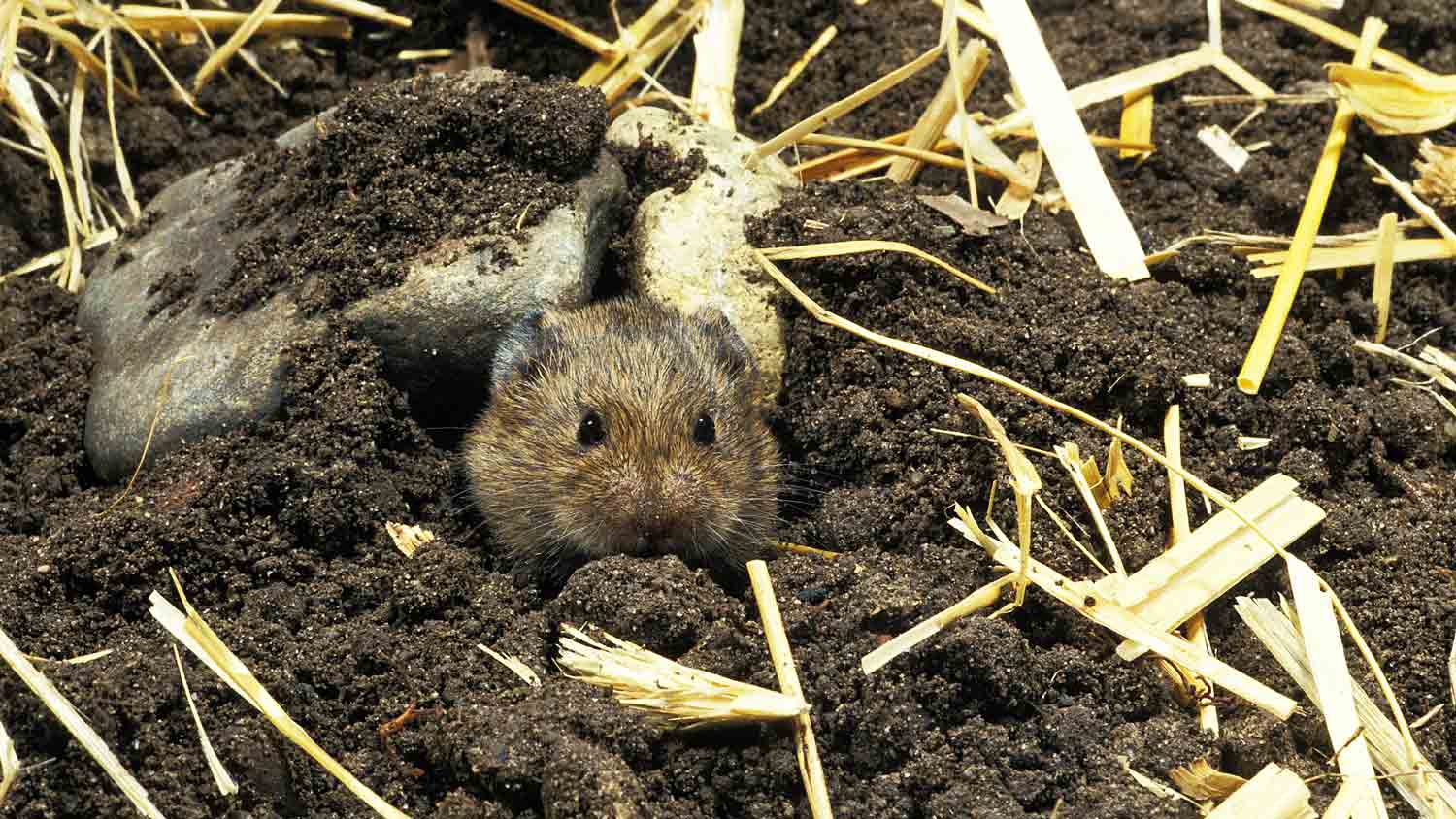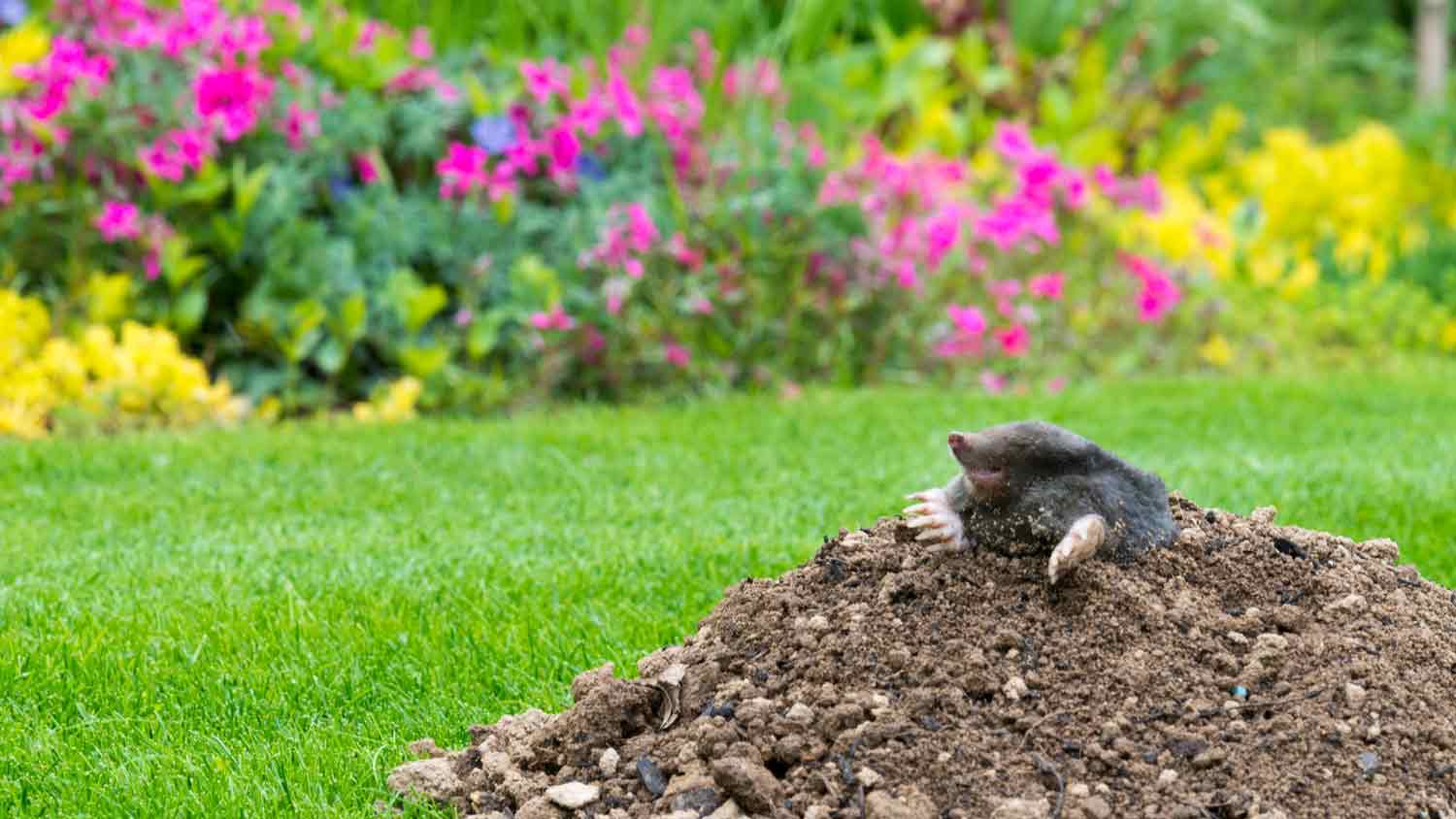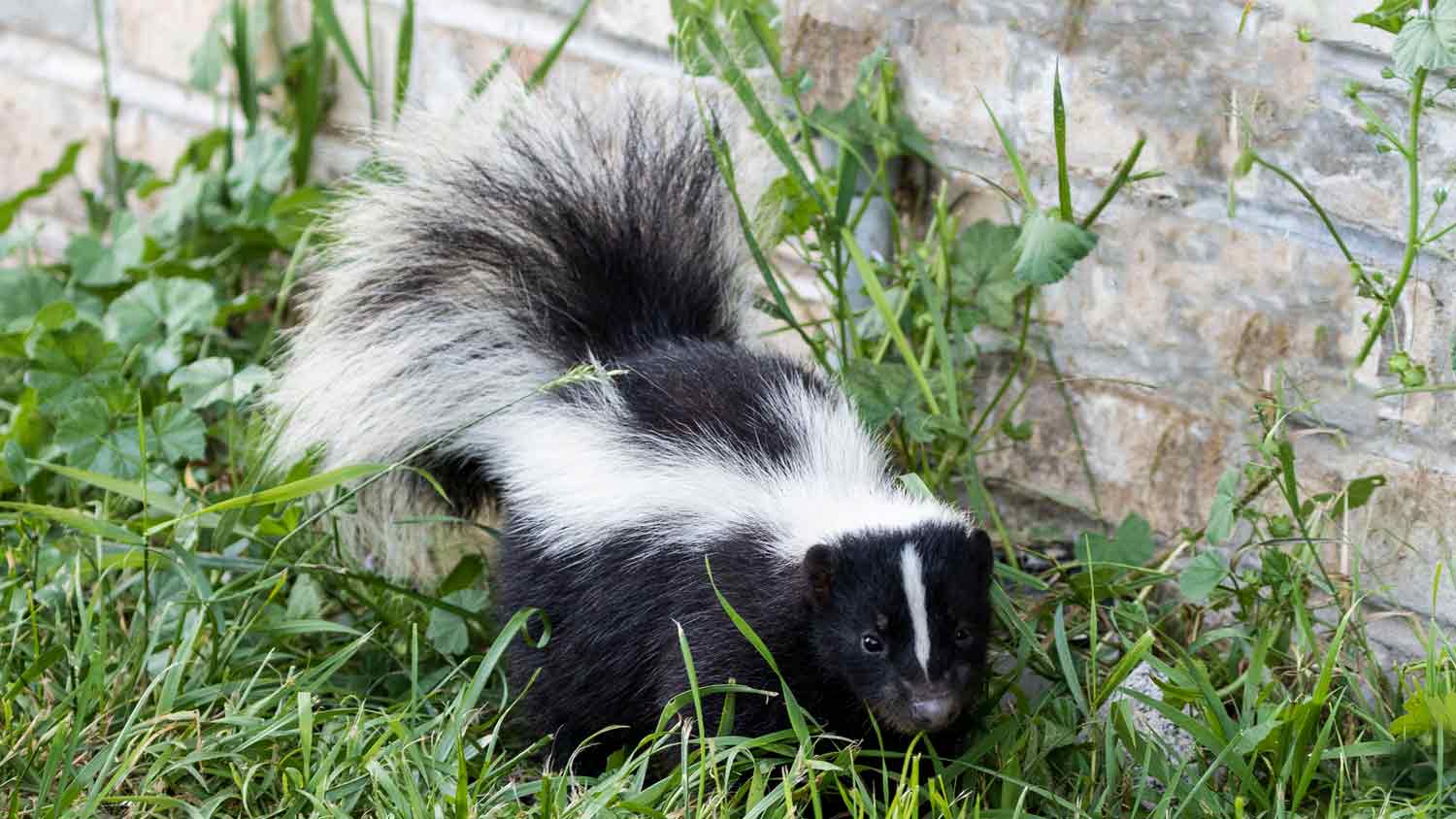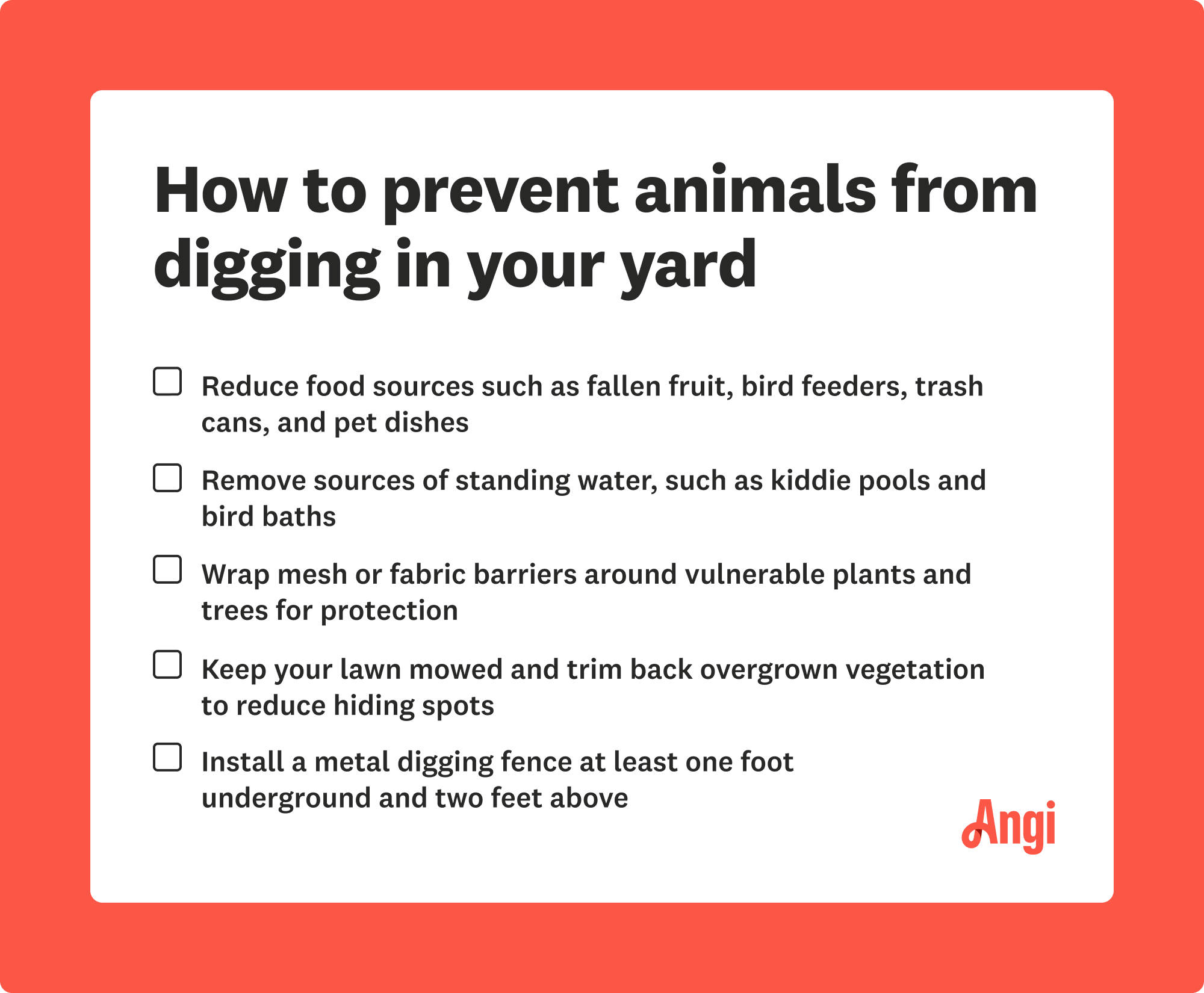
Your skunk removal cost will depend on several factors, including type, location, and more. Our guide will cover everything you need to know about skunk removal costs.
These are the most common culprits of craters in your yard


Common digging pests include voles, chipmunks, moles, skunks, and groundhogs.
Animals can often be identified by the shape and size of their holes.
Routine lawn maintenance can eliminate food and hiding spots for pests.
The safest way to prevent digging is to call a professional wildlife removal service.
Finding holes in your well-kept lawn is frustrating, and the tripping hazard they pose can make it unsafe for work and play. Exactly what animal is digging holes in your yard might not be clear. This guide can help you identify the signs left and damage caused by common animals, how to prevent them from digging, and when to hire a pro.

Also called field mice or meadow mice, voles can be distinguished from actual mice by their darker color, rounder shape, and smaller ears, eyes, and tails. These tiny rodents burrow beneath gardens to feed on plant roots and bulbs, wreaking havoc on yards along the way. One difference between moles and voles is the lack of a mound at their tunnel entrances.
As they dig, voles create extensive burrow networks with telltale runways on the lawn’s surface. If you notice runway paths an inch or two wide connected to neat round holes near your home's foundation, walkways, or slabs, then you likely have voles. The ground may feel soft and spongy above their tunnels, and you may also see gnawed plants and tree bark above the ground.
Voles prefer tall grass, so mow regularly and remove the ground cover where they hide. Wrap them with hardware cloth, mesh, or tubing to protect vulnerable plants and trees. Bait traps with peanut butter or apple slices and leave them near active runways to get rid of voles.
Trapped animals can be dangerous, no matter their size. Do not attempt to handle them—call in a pro for safe removal instead.

Dozens of chipmunk species make their homes all across the country, and most are easy to identify by the characteristic black and white stripes running from their faces down their backs and tails. These tiny, agile rodents dig to nest and may burrow in your yard to look for food.
Chipmunks eat a variety of plants and insects, and you may notice the shells of seeds and nuts scattered where they've been feeding. Their holes are slightly larger than a golf ball and are not mounded. You may also hear their distinctive chirping calls in the morning and late afternoon.
To get rid of chipmunks, keep your lawn trimmed to reduce hiding spots. In the summer and fall, when they’re storing food for winter, they may fall for live traps baited with grain, seeds, or nut butter. Have a pro relocate any trapped chipmunks to a suitable area. Fumigate or destroy old burrows with a ripping bar to prevent re-infestation. Cover vulnerable plants to protect them.

It's typically easy to tell if you have a mole on your property. These small mammals dig underground for grubs and worms to eat. As they do, they create conical mounds around their holes and leave raised ridges over their tunnels. Moles have velvety fur, large paddle-like front paws, and no visible eyes or ears.
One of the best ways to get rid of moles is to limit their supply of insects to eat.
Release beneficial nematodes to kill grubs without harming the environment.
Apply castor oil mole repellents to burrow entrances.
Set up ultrasonic devices to drive moles away with high-pitched frequencies.
Live traps may work, but many states limit mole trapping. As destructive as they are to lawns, moles are solitary and very territorial. You'll likely only ever have one mole or family of moles at a time, which makes the per-mole cost of professional mole removal more manageable.

The easiest ways to identify skunks are their black and white stripes and foul-smelling spray. Despite these distinct traits, it isn't always obvious when you have a skunk digging in your yard. They're only active at night and only spray when they're threatened. You may smell their musk coming out from under buildings or debris piles on your property.
However, skunks leave behind an identifiable mark—three- to four-inch cone-shaped holes surrounded by a ring of loose soil. They dig in search of grubs and other insects to eat. They also tend to burrow dens under homes, decks, porches, or sheds. Skunks will also overturn garbage cans and pet food dishes that are left outside.
Want to get rid of skunks? Skunks have extremely light-sensitive eyes, so one simple way to keep skunks away is by installing motion-activated floodlights. Secure garbage cans and keep your yard clear. Humane trapping is an option, but you could get sprayed. You may also have to follow skunk-specific local regulations. A skunk removal service near you can help.

Also known as woodchucks, groundhogs are large, stocky rodents that can weigh up to 10 pounds. You'll know them by their brownish-gray fur, thick, bushy tails, and large front teeth. Those big teeth help them gnaw through plants and trees, leaving jagged bite marks and serious damage to gardens wherever they go.
These notorious diggers create burrow systems that are dozens of feet long with multiple entrances. You'll see crescent-shaped mounds around these entrances. Their burrows are so extensive that they can cause soil shifting and structural damage to buildings and utilities.
There are a few ways to get rid of groundhogs.
Apply groundhog eviction fluids that mimic the scent of predator urine near burrow entrances to encourage them to leave your yard for safety.
Bait live traps near burrows. The best groundhog bait is fruit or vegetables. Captured groundhogs will need to be relocated.
Pay the cost of professional groundhog removal, which is usually $150 to $200.

Animals primarily dig for survival, searching for food, shelter, or nesting.
Many animals, such as gophers and moles, dig for grubs or vegetation. Earthworms are a major attractor, and treating your yard for grubs can help reduce pests rooting around your grass. Animals may also love your plants and vegetation, so you may notice digging marks near your garden.
Many animals burrow to create shelter. Chipmunks are a prime example, using your yard to create a network of burrows with multiple entrances. These burrows offer shelter and storage for their food.
Finding holes in your yard could indicate that animals are digging and creating nests. These nests are where they can have their offspring. Similar to digging burrows for shelter, they use these tunnels to protect their young, and they can have multiple entrances.
Whether you’ve spotted the signs of one of these five common digging animals or you’ve been invaded by a less-common species, you’ll likely want to prevent new holes. There are humane ways to prevent and remove digging animals from your yard without causing them harm, but the most efficient is to call a wildlife removal service near you.
These companies are well-versed in local regulations that legally protect certain animals and will know how to deal with them safely and effectively. They know how to find and handle a variety of species that may be damaging your property, helping you avoid the inherent risk involved with wild animals. Expect the cost of wildlife removal to range from $190 to $585 on average.
From average costs to expert advice, get all the answers you need to get your job done.

Your skunk removal cost will depend on several factors, including type, location, and more. Our guide will cover everything you need to know about skunk removal costs.

While moles eat termites, ants, and more, they can still be a nuisance. Learn yard mole removal costs, including humane options to decide what’s right for you.

When calculating fox removal costs, factor in whether you take a DIY approach or call in the pros, the number of animals involved, and the location.

Adopting a holistic approach to getting rid of rats naturally is a safe, effective, humane, and environmentally friendly way to rid yourself of these pests.

When chipmunks start swinging from the bird feeder, it's time to take action. Here’s how to get rid of chipmunks, from natural repellent to barriers.

If there’s a snake in your house or yard, who should you call for snake removal? Though expensive, a wildlife removal pro will ensure the job is done right.